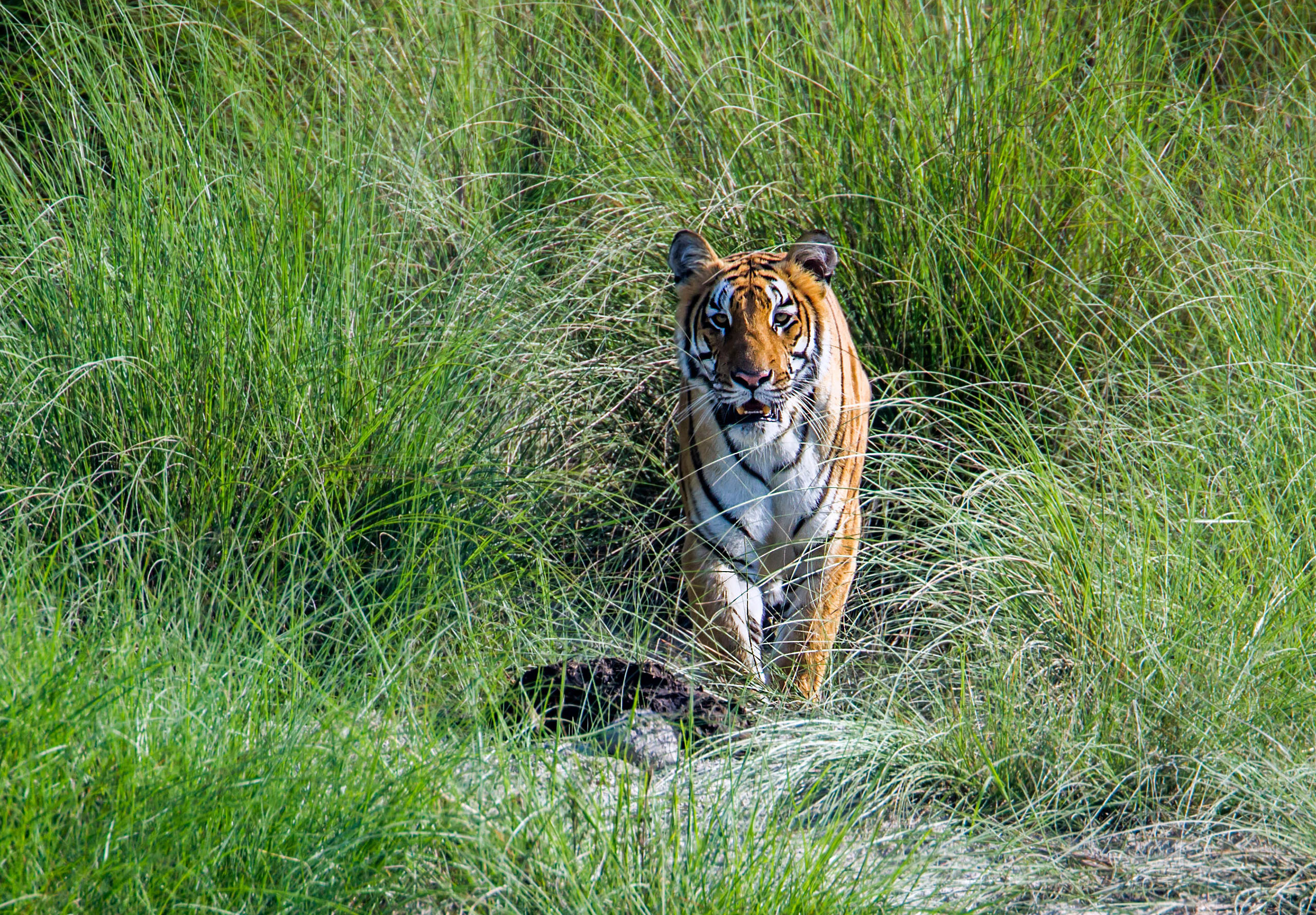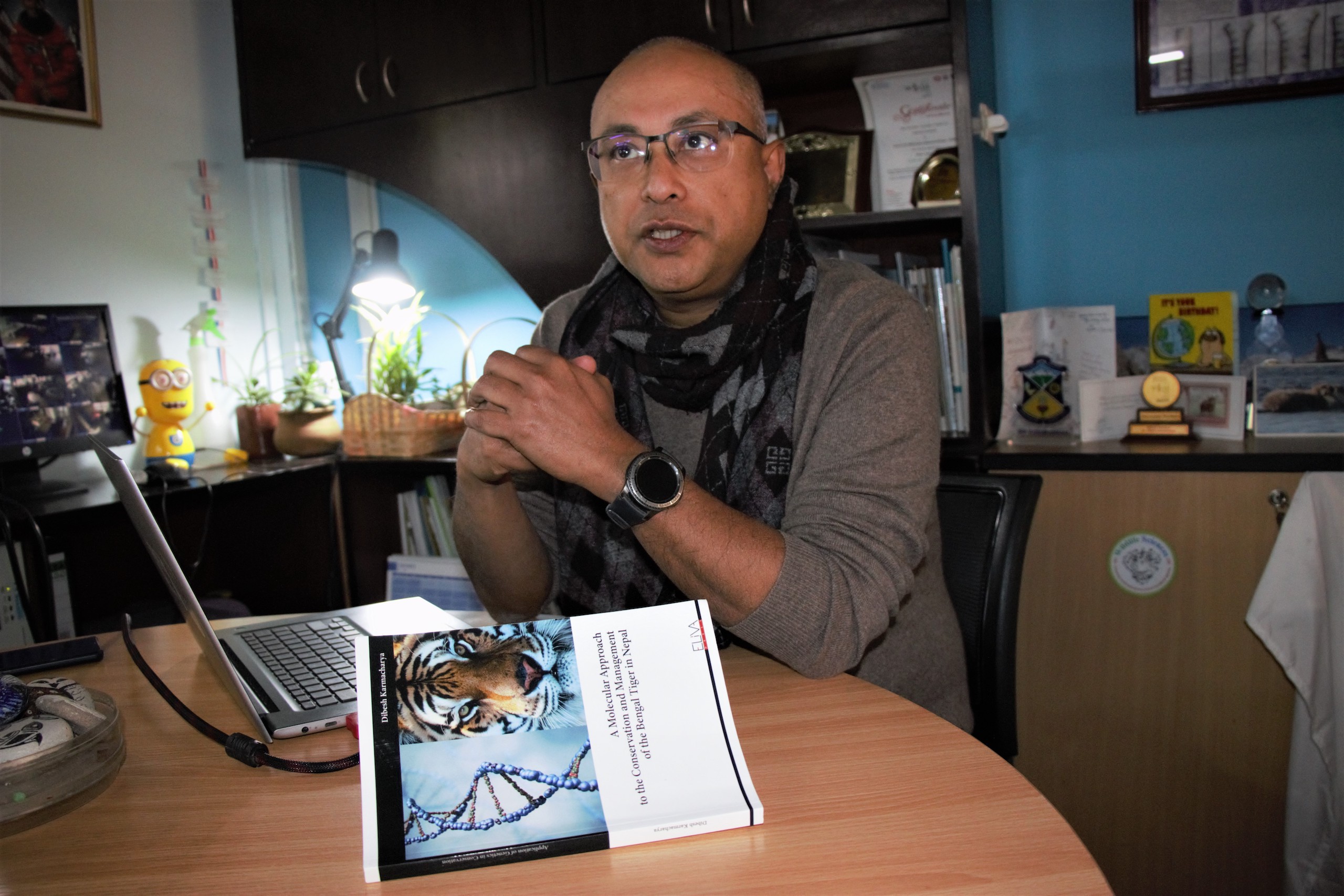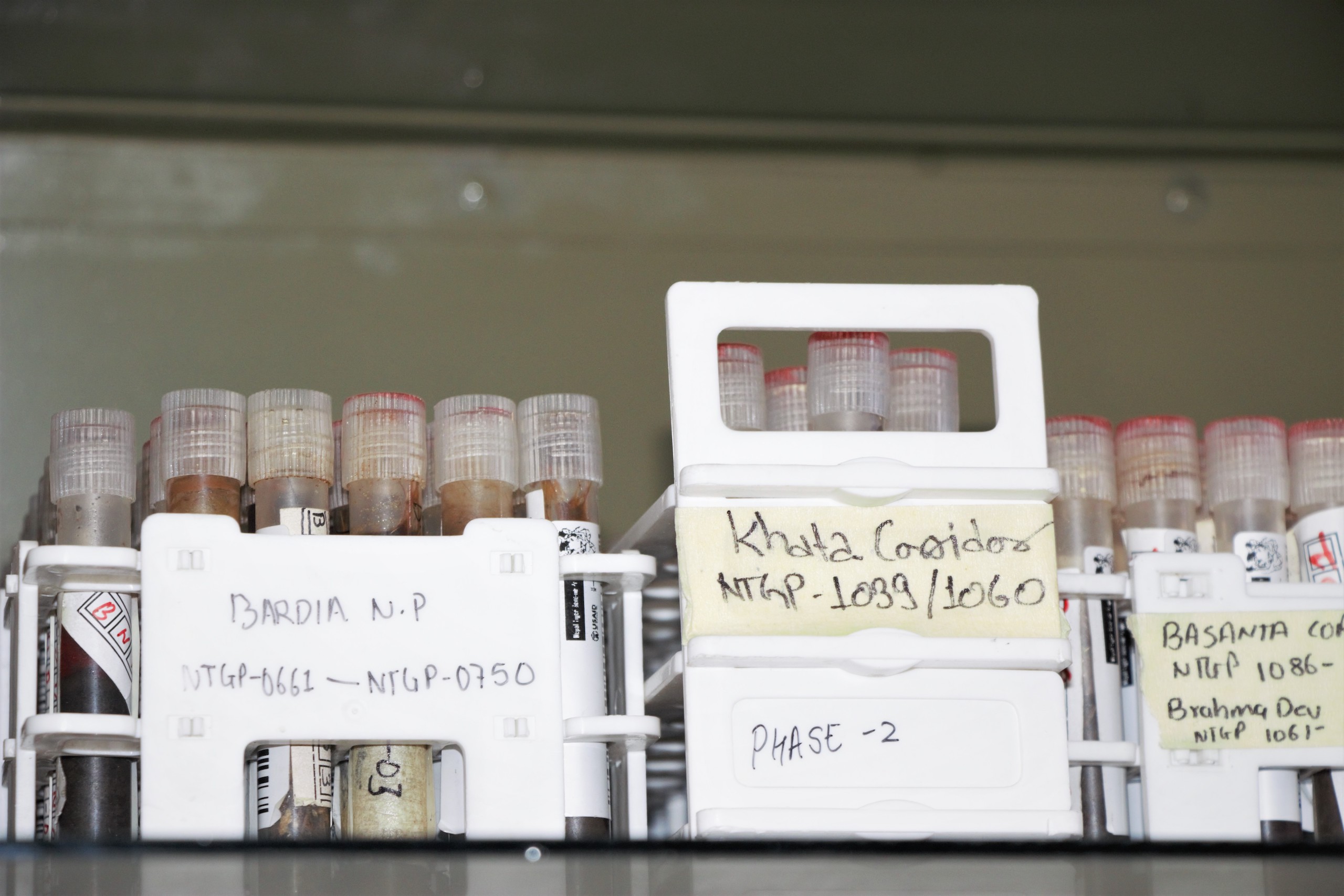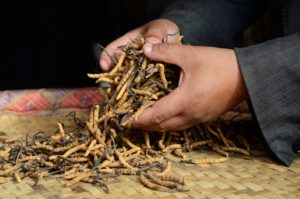By the latest estimates, Nepal is home to 355 wild tigers – almost triple the country’s tiger population in 2010, which stood at 121. Nepal was the first country to achieve a target agreed in 2010 among all countries then home to wild tigers: to double their tiger population by 2022. Nepal’s success is all the more notable when compared with the track record of some other countries since 2010: tigers are now considered extinct in Cambodia, Laos and Vietnam.
But an increase in tiger numbers in Nepal has raised some important questions. How many tigers can the country’s protected areas hold? How healthy is the population? And with a growing tiger population posing a potential risk to the communities they live near, what strategies can help to reduce human-tiger conflict?
Dibesh Karmacharya, a noted genetic scientist in Nepal, believes that tiger DNA holds the key to answering some of these critical questions. In 2007, Karmacharya founded a wildlife genetics laboratory, the Centre for Molecular Dynamics Nepal, in Kathmandu. Then in 2011, he launched research into tiger genetics – the first of its kind in the country – which involved collecting tiger scat across Nepal and profiling the animals’ DNA. He has recently published a book based on this research: ‘A Molecular Approach to the Conservation and Management of the Bengal Tiger in Nepal’.
The Third Pole met Dibesh Karmacharya in his lab in Kathmandu, to learn what secrets of the lives of tigers can be unlocked through studying their DNA, and how this could help both big cats and people in Nepal.
The Third Pole: How can using DNA help to accurately count tiger populations?
Dibesh Karmacharya: Traditionally, tiger counting was done mostly by using pugmarks [footprints] to identify individual tigers. This technique relies on measuring a paw print, with a presumption that each paw print is unique. But environmental exposure like ground texture and moisture influences the paw prints, [and] that could result in wide errors in estimates. After pugmarks, camera traps have been in use as a more reliable alternative – this uses a remote camera to capture tiger images with an assumption that each individual tiger has a unique stripe [pattern]. However, there are several disadvantages of camera trapping, including poor performance in difficult terrain, adverse weather conditions, susceptibility to theft or vandalism, and low detection in larger areas. It also demands more human resources.
The molecular approach has advantages over most of those problems. We collect DNA from tiger scat [droppings] to derive a genetic profile of an individual tiger. As DNA differs between every individual tiger there is less error in tiger population estimates.
Could DNA replace camera traps when it comes to counting tigers?
I don’t think at this point [DNA] can totally replace camera traps immediately. We don’t have to carry out DNA study separately, but we can embed this component while conducting tiger surveys. With advancement in the science, it’s not that far off that it could be the principal method [used] to count tigers.
There is resistance from government authorities and a chunk of the conservation fraternity to making a shift from camera traps to DNA. I think it’s mostly because there is a fear about the results. Given nobody wants to say tiger numbers have decreased, there is less space to manoeuvre any result from genetic studies, but it could be a bit easier while using camera traps if anybody wants. Secondly, countries have been saying they don’t have resources to do it.
How expensive is DNA profiling of tigers?
Currently, half a million dollars is being spent to count tigers by camera trapping in Nepal, but we can do DNA-based counting and analysis with half of that amount.
What can DNA studies tell us about the genetic health of tiger populations, and the extent to which populations may be isolated?
The tiger population in Nepal can be split into three isolated sub-populations that are separated by agricultural lands or human settlements. The largest population is in Chitwan National Park and the adjacent Parsa National Park in the lowlands of central Nepal. To the west of Chitwan there is another isolated population in Bardia National Park and – further west – a third population in Shuklaphanta National Park. Between 2011 and 2013, the Nepal Tiger Genome Project which I led carried out the first comprehensive genetic study [of these] tigers. We collected 396 tiger scat samples [and] counted 125 individual tigers, 77 male and 48 female.
[We found that] that genetic diversity was slightly better in Bardia National Park compared to others, and this meant that in Chitwan National Park, conservation focus should be more on increasing heterozygosity [genetic diversity] for maintaining a healthy and sustainable population.
We found seven migrant tigers (five males and two females) moving between sub-populations in Nepal. For example, we found evidence of one male and two females moving from Shuklaphanta to Bardia National Park. If they [were to] breed there, then that would likely avert the detrimental effects of inbreeding depression.
What can DNA tell us about the lives of tigers and other species?
When we collect scat, it’s not just tiger DNA that can be profiled. Dietary composition is among other important information we collected in our study – that is not possible through camera trapping. In our study we were able to create a dietary map of tigers.
When we carried out the same kind of study on snow leopards in mountain areas of Nepal, especially in Mustang, we found that the snow leopards’ diet included 43% domestic goats, 55% bharal [wild blue sheep] and 2% domestic sheep. [This means] the snow leopards’ main diet is domesticated animals, and that’s the reason for the human-wildlife conflict.
DNA can be a very effective forensic tool to pinpoint the source of trafficked wildlife body parts – is this being used in Nepal to tackle tiger trafficking?
It’s an emerging science, that has been used in several other species across the globe. We can identify the sex and geographical origin of seized tiger body parts from Nepal by using our genetic database of wild tiger populations that we collected during our study. We applied this technology with 15 seized putative tiger parts, including 13 skin pieces and two blood-smeared knives, which were confiscated by the Central Investigation Bureau of Nepal Police between 2014 and 2016.
All forensic samples were found to be of tigers: 10 males and five females. One genotype of a forensic sample matched 100% with a previously profiled female tiger in Bardia National Park – DNA we have in our laboratory. That meant the female tiger was alive during the period 2011-2013, and that tiger could have been poached very recently [before the confiscation]. The remaining samples didn’t match our DNA profiles, but we were able to identify where those tigers came from. Most samples were from Bardia and Sukhlaphanta regions, pointing to where the poaching pressure was.
How can countries in South Asia better collaborate to embed use of DNA in conservation science?
There are a few labs in India, but they also work in silos. We have one lab in Nepal, whereas Bangladesh and Bhutan have no such lab facilities. Most of the [tiger] habitats in Nepal are connected to protected areas in northwest India. India and Bangladesh share the Sundarbans, and Bhutan and India also share tiger habitats. We can establish a regional tiger genome centre and leverage resources and expertise.
When it comes to genetic research, there is a deeply embedded fear among countries. They regard it [genetic information] as a resource and worry – what if others get information about their tigers? But the overall goal should be to understand endangered species better and act jointly to save the species, as several habitats are connected in the region. We need to build trust and should have willingness to act. We must go into genetic level study if we really want to save tigers and implement management strategies more effectively.








![A wild Bengal tiger in Bandhavgarh National Park in Madhya Pradesh [Image by: Mark Smith/Alamy]](https://dialogue.earth/content/uploads/2015/01/wild-tiger-300x200.jpg)



